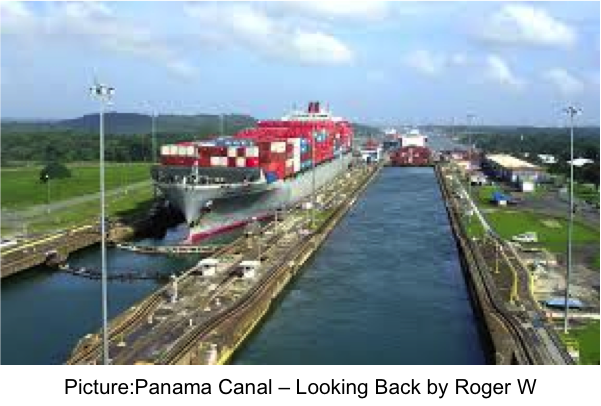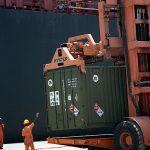Good News Shippers: Panama Canal Situation Is Much Improved
You wouldn’t know it by watching the news, but the water conditions at the Panama Canal have improved. More ships can transit the canal than restrictions had been and were planning to allow. With that, carriers are returning shipping services through the canal. This is especially good news as the Red Sea and Gulf of Aden remain volatile, continuing to force carriers to route ships away from the Suez Canal.
The Panama Canal Situation

The drought that lowered the water level of Gatun Lake, which feeds the Panama Canal, made mainstream news with many using it to feed into the climate change narrative. With it also being a naturally occurring El Niño year, which tends to cause less rainfall in Panama, feared rose that the drought conditions would get much worse. October seemed to confirm those fears. October is part of Panama’s “rainy” season, but precipitation levels were reported as the lowest since 1950.
By the time November hit, restrictions tightened on the Panama Canal. Rainfall actually started improving in November, but by the time December hit, the Iran-backed Houthi attacks on ships in the Red Sea captured the news. With restrictions still going strong on the Panama Canal, now both of international shipping’s major canals were suffering disruption.
Despite shippers facing double bad news, conditions at the Panama Canal were quietly improving in December. In fact, on December 15th, the Panama Canal Authority put out an advisory to shippers, announcing a loosening of its restrictions on the number of ships allowed to cross the canal. Things were not back to normal, but the outlook for January and February majorly improved.
Restrictions were supposed to limit the number of ships allowed to transit the Panama Canal per day from a normal of about 36 to 22 in December, 20 in January, and only 18 in February. Instead of a decrease in January, the Panama Canal Authority changed course to increasing the number of ship crossings per day to 24. Improvement has helped things move from looking bleak for the canal in February to extremely optimistic.
Carriers Returning Services to Panama Canal
Keith Wallis reported in the Journal of Commerce (JOC) yesterday (February 12th) on services carriers are bringing back to the Panama Canal:
Hapag-Lloyd said THE Alliance restored transits through the canal on some of its trans-Pacific to US East Coast EC2 services from January.
“Yes, the EC2 service is transiting through the Panama Canal again,” a Hapag-Lloyd spokesperson told the Journal of Commerce.
Ocean Network Express (ONE) said Panama Canal transits would be fully restored on east and westbound sailings on the EC2 service from Feb. 11 with the departure of Tayma Express from Norfolk, Va. At least four eastbound EC2 services are due to use the canal in February, schedules showed.
ONE, in a customer advisory last week, said due to the improving situation at the canal, other services are also being considered for a resumption of Panama transits. And the carrier said it was ending its Panama Canal contingency surcharge on US and Canadian exports “due to operation improvements within the canal.”
THE Alliance has also increasingly switched its EC6 service back to using the canal rather than via the Cape of Good Hope, although a final decision is still made “on a case-by-case basis depending on available vessel bookings through the canal,” the Hapag-Lloyd spokesperson added.
ONE vessel schedules show three EC6 eastbound sailings from Mobile have used the Panama Canal since Jan. 28, while a March 3 sailing is also expected to use the waterway.
The EC2 service calls at US East Coast ports including Norfolk, Charleston and Savannah and ports in China and South Korea such as Shanghai, Ningbo and Busan. The EC6 service connects the US Gulf ports of Mobile and Houston with Busan, Kaohsiung and ports in China including Hong Kong, Shenzhen and Shanghai.
The situation on the Europe-Latin America trade is “OK, since for the LatAm-Europe services — South America West Coast Express [SWX] and Mediterranean, Central America and South America West Coast Express [MSW] — we have most of the canal transits pre-booked,” the Hapag-Lloyd spokesperson said.
Things are not 100% back to normal at the Panama Canal, but that the situation is improving is clear. And it couldn’t be needed more.
Additionally, there are also truck and rail options across Panama that carriers are still utilizing, which help the situation too. I won’t share all the details here, but Wallis wrote about them and other boosting services to help international cargo flow, so you can get more information of how carriers are using those options in his JOC article.
Ultimately, shippers could probably use some good news right now, so I’m happy to be able to share this with Universal Cargo blog readers who haven’t already heard about the much needed improvement at the Panama Canal.





